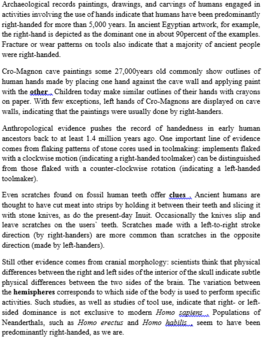Read the following passage and mark the letter A, B, C, or D on your answer sheet to indicate the correct answer to each of the questions from 30 to 34.
Visitors to London are struck by the proud splendour and glamour of one of the world's
oldest capitals, admiring iconic sites like Big Ben, the Palace of Westminster and Buckingham Palace. However, visitors seeking a glimpse into the city's everyday life should not miss Portobello Market, which is the most-visited market in London.
This vibrant market has been featured in a number of films, documentaries and bestselling books, the most famous being the film ''Notting Hill'' starring Hugh Grant and Julia Roberts, which brought Portobello Market to the attention of audiences all over the world.
Portobello Market is divided into different sections selling second-hand items, clothing,
jewellery, souvenirs and vegetables. The most sought-after area is devoted to antiques. Visitors may feel overwhelmed as there are over 1,000 booths manned by antique dealers from throughout England. It's a great fun to browse through antique cameras, watches, pottery and paintings that date back 300 years. They are sold at different prices, so it's possible to find a few good bargains. It seems that both buyers and sellers look forward to the weekends when they can meet and escape the city's fast pace at Portobello Market.
When tired from exploring the market, visitors can drop into the nearby food courts to
savour an Indian curry, Italian pizza or sandwiches from Europe. It's a great pleasure to drink a cappuccino while listening to street performers. These represent the lively fun of Portobello
Market, offering exciting experiences that keep people coming back.
(Adapted from ''Heritage'' - Vietnam Airlines in-flight magazine)
The word ''savour'' in paragraph 4 mostly means ______.
A. see
B. prepare
C. enjoy
D. make






Chọn C
Từ “savour” trong đoạn 4 gần nghĩa nhất với:
A. See (v): nhìn
B. Prepare (v): chuẩn bị
C. Enjoy (v): tận hưởng = savour (v) -> chọn C
D. Make (v): làm